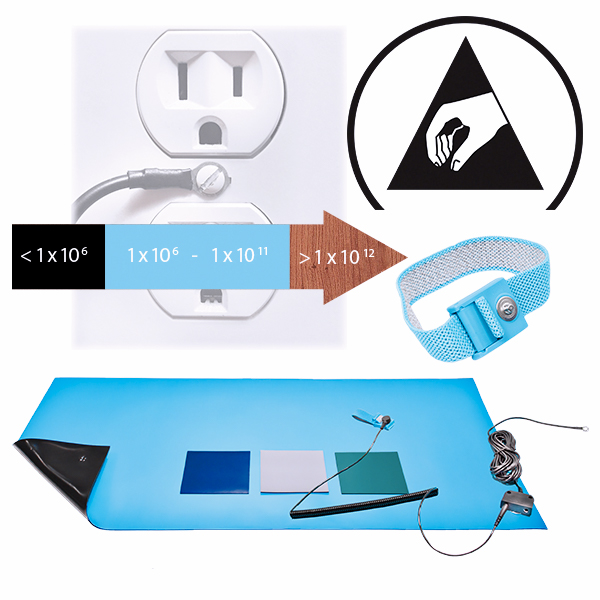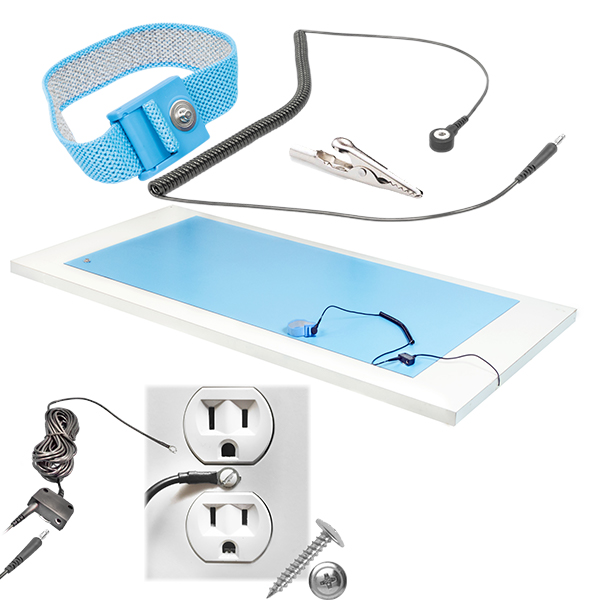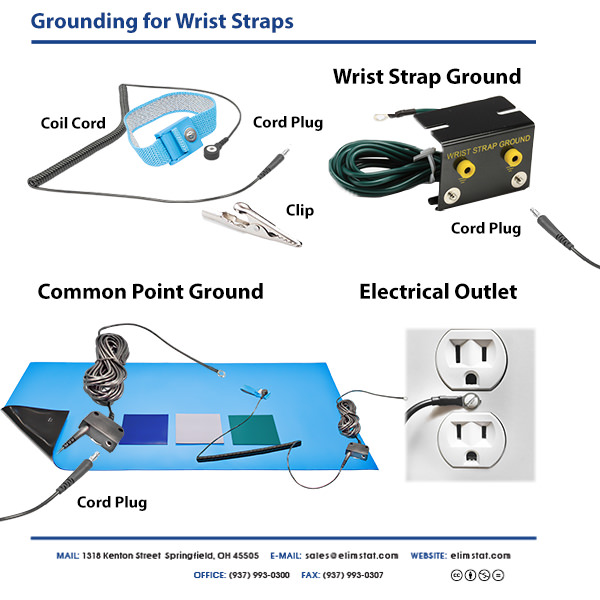
When working on anything electronic, you want to take precautions against static electricity and ESD (electrostatic discharge) from damaging circuitry by grounding as much as possible in your workstation. Let’s examine a basic ESD workstation setup to bond ourselves and work surfaces, so they are grounded electrically.

Mats bond work surfaces. Wrist straps bond people. Ionizers neutralize charges in air molecules.
Insulators commonly found near workstations (like carpets, plastic, or wood) often are the sources of static electricity that damage electronics.
Since insulators can hold multiple positive and negative charges in pockets across their surface, there is no safe way to prevent static electricity from building up on them other than to eliminate them from the work area, cover them with grounded materials or use ionization to blow static electricity off the work surfaces. Most engineers implement grounding and ionization in their ESD workstation setup.
For example, if we use a wood table, we would want to cover that with a mat grounded into the electrical outlet. If we have plastic shelving, we replace it with metal shelving since metal is conductive and will dissipate electrical charge more quickly to the ground. This is why an ESD workstation mat used on the table is known as a static dissipative mat.
Static Dissipative is defined in ohms resistance to charging:

• Anything less than 1 x 10e6 ohms is considered Conductive.
•Anything above 1x10e12 ohms is considered Insulative.
• Anything between these two points is considered Static Dissipative.
The ESD Association recommends that a static safe workstation mat has surface resistance
Whether you are using a metal table or wood table underneath the mat, you still will want to give static electricity a dedicated path from it into a grounded electrical outlet by connecting a grounding cable between them.
Grounding Cables come in several different types. The grounding cable is what connects the anti static mat being used as a work surface to the grounded electrical outlet.

There are grounding cables for mats, wrist straps, and common point grounds for both.
What you do not want to do is to use the alligator clip to clip the wrist strap to the anti static mat. This will not work. In fact, this will increase the total system resistance to the
Unless you have to, it’s recommended not to use the alligator clip. While it seems convenient, it is best used only when you are sure of the pathway to the ground.
